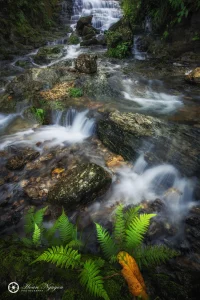How to Plan a Perfect Trip – Expert Tips from 10 Years of Travel Experience
This guide is based on insights gained from over a decade of traveling across all 64 provinces of Vietnam and more than 10 different countries. I’ll continue updating this article with new experiences from future journeys! Hopefully, it will provide useful knowledge and practical tips for fellow travel enthusiasts.
What Makes a Trip Successful?
- Where should you start when planning a trip?
- What essential information do you need before your journey?
- How do you ensure a smooth and enjoyable experience?
All these questions will be answered in this article!
Step 1: Essential Information for Trip Planning
Whether you’re traveling for photography or leisure, there are three key factors you must consider:
1. Accommodation
Finding a place to stay is crucial. Here’s how to do it efficiently:
- Use Google Maps: Search for your destination, click on the “Hotels” option, and browse through available accommodations.
- For major cities, check third-party booking platforms like Booking.com, Agoda, Airbnb for price comparisons and reviews.
2. Weather & Best Travel Seasons
A poorly timed trip due to unfavorable weather can ruin your experience. Consider these points:
- Weather has a huge impact on your journey—plan around the best months to visit your destination.
- Check historical weather data from the past 1–2 years for a general idea of expected conditions.
- Research seasonal changes like rainy/dry periods to avoid unpleasant surprises.
3. Transportation & Getting Around
Lack of proper transportation can turn your trip into a nightmare. Plan ahead by:
- Checking intercity bus routes to your destination.
- Looking for rental options at homestays or hotels.
- Asking locals—hosts, drivers, or even shopkeepers—for the best ways to get around.
- Noting that some routes only operate at night, which can save time on long-distance travel.
Step 2: Setting Up Your Travel Plan
1. Choosing the Right Time to Travel
- Decide your travel dates based on weather conditions and trip objectives.
2. Picking the Best Accommodation
Pro Tips:
- New hotels tend to be cleaner and better maintained.
- Areas with many hotels usually have good dining options nearby.
3. Deciding on Transportation
- If staying at a homestay, ask the host for transport recommendations—they might even book a ride for you!
- Destinations close to highways often have easier access to buses and public transport.
- Public transportation is categorized into provincial and district-level routes, so research accordingly.
Step 3: Creating an Itinerary
- Use other travelers’ itineraries as references, but customize based on your own interests, budget, and energy levels.
- Focus on the key highlights of your destination and build your schedule around them.
- Ask yourself:
- What’s the purpose of this trip?
- What sights do I want to see?
- What activities do I want to try?
Best Sources for Travel Information
- YouTube travel vlogs – many detailed and reliable reviews are available.
- Local tourism websites – often provide essential insights.
- Travel communities & forums – great for tips from fellow travelers.
Step 4: Staying Organized During the Trip
- Stick to your itinerary as much as possible, but be flexible for unexpected changes.
- Gather local tips from roadside cafés or market vendors—they often have the best insider knowledge.
- Save important photos of your destination on your phone—this helps when asking locals for directions.
- Collect contacts of new acquaintances—having a local taxi or motorbike driver’s number can be a lifesaver!
If you found this guide helpful, support me by engaging with the post—your interaction motivates me to write more!


